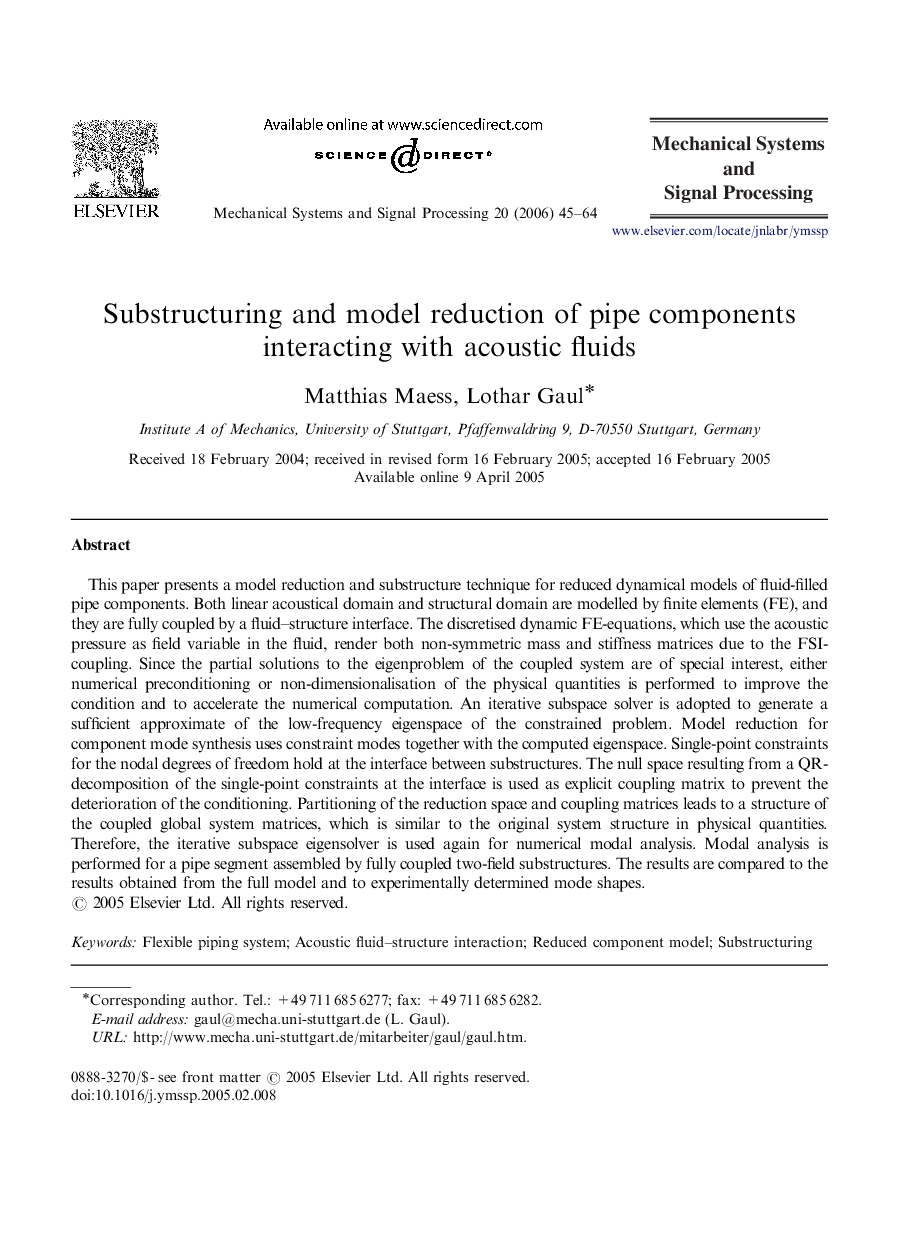| Article ID | Journal | Published Year | Pages | File Type |
|---|---|---|---|---|
| 559987 | Mechanical Systems and Signal Processing | 2006 | 20 Pages |
This paper presents a model reduction and substructure technique for reduced dynamical models of fluid-filled pipe components. Both linear acoustical domain and structural domain are modelled by finite elements (FE), and they are fully coupled by a fluid–structure interface. The discretised dynamic FE-equations, which use the acoustic pressure as field variable in the fluid, render both non-symmetric mass and stiffness matrices due to the FSI-coupling. Since the partial solutions to the eigenproblem of the coupled system are of special interest, either numerical preconditioning or non-dimensionalisation of the physical quantities is performed to improve the condition and to accelerate the numerical computation. An iterative subspace solver is adopted to generate a sufficient approximate of the low-frequency eigenspace of the constrained problem. Model reduction for component mode synthesis uses constraint modes together with the computed eigenspace. Single-point constraints for the nodal degrees of freedom hold at the interface between substructures. The null space resulting from a QR-decomposition of the single-point constraints at the interface is used as explicit coupling matrix to prevent the deterioration of the conditioning. Partitioning of the reduction space and coupling matrices leads to a structure of the coupled global system matrices, which is similar to the original system structure in physical quantities. Therefore, the iterative subspace eigensolver is used again for numerical modal analysis. Modal analysis is performed for a pipe segment assembled by fully coupled two-field substructures. The results are compared to the results obtained from the full model and to experimentally determined mode shapes.
